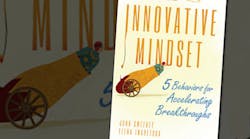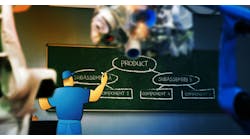When people approach our organization – Brave New Workshop Creative Outreach – to work with them on their innovation programs, the first step is always to simply set up a call to get to know them and their situation. For more than 15 years I have started with the same question: “Can you tell me a little bit about your current innovation program?”
Although I have posed that question more than one thousand times to thousands of different people in hundreds of different industries and organization whose programs varied in their degree of development, the answers seem to have much in common and are startlingly consistent.
For often what seems like hours or even days, I listen to them share about initiatives, internal definitions written, programs launched, task forces created, company rallies, hiring and firing of chief innovation officers and third-party consultants, research and numerous dead ends.
This is the point in the conversation at which I typically drop the big question. “So, tell me about what your company is doing to help people behave more innovatively?” On the phone, there is always an awkward silence; in person, there is a bit of eye glazing and a far-off stare. In both cases the reply is usually the same: “What do you mean by behavior?”
I then get very complicated and scientific in my response, which is typically, “What I mean by behavior is, how do the people in your organization act? How do they treat each other? What does it feel like after people come up with ideas? What happens when an innovation attempt fails? How do people treat each other on conference calls or in brainstorming sessions? Does the vibe in the room ever change when certain individuals walk in? What I mean is: How do people behave?”
We often forget about everyday behavior, because in a way it is so basic that the big thinkers – the super smart innovation architects – can assume that everyday behavior is a given that will automatically change once a great system is in place. The old saying “Everything looks like a nail to a hammer” can be an appropriate way to think about the manner in which innovation programs are structured – and often the teams who work on those programs forget a very basic ingredient of a successful innovation effort: the people – and all their fears, emotions, and humanness – who need to fuel it.
Although sometimes Steve Jobs is quoted too frequently, we are fans, and can’t help but share the way he put it: “Innovation has nothing to do with how many R&D dollars you have. When Apple came up with the Mac, IBM was spending at least 100 times more on R&D. It’s not about money. It’s about the people you have, how you’re led, and how much you get it.”
Innovation is about people and their assumptions and subconscious thought patterns (a.k.a. their mindset) and their daily actions and habits that stem from that mindset (a.k.a. their behavior). Put all those together, add some procedures, rewards and penalties, social dynamics, unspoken rules – and a pinch of stress – and you get a wonderfully messy, organic, and complex environment. An environment in which behavior, not lip service (although words are also important), drives the results. If you fail to address that daily behavior, even the greatest strategy and plan to drive innovation are doomed to fail.
If the systems we create aren’t rooted in a thorough understanding of the human interaction they are supposed to support, they can actually deter the experience we want to create for our customers.
Below are three tips to make sure you focus on people and keep them at the forefront of your innovation initiatives:
1. Be relentlessly curious. Curiosity is an aggressive, investigative, almost inexhaustible need to learn, find out and experiment. That curiosity shows itself in how people communicate with others, as well as their ability to jump in and engage with a situation – or, in the context of innovation, try things out. Curiosity fuels our ability to intently listen to our teammates, colleagues, direct reports and customers.
2. Appreciate differences. Unique views and opinions are the key drivers of innovation – embrace them, don’t throw them to the curb. More often than not, it takes many iterations to land on the best product or path forward – allowing the people in your organization to contribute to those iterations – in big or small ways – inevitably empowers your workforce, builds trust and a sense of ownership.
3. Walk the walk. First, honestly evaluate and observe your own behavior in a way that provides clear direction for what you need to do to get better at your job. Only then can you lead and contribute with a boldly realistic and open perspective. Be the first on your team to embrace a few powerful assumptions, including:
- Mistakes are a great source of inspiration and learning.
- Change is fuel—not an obstacle.
- Ideas and honest opinions have value that we should celebrate, not judge.
- We all have the power to create change and impact those around us.
- We don’t need all the information just to begin.
Focusing on helping your people – including yourself – embrace a mindset of discovery will help them (and you) behave consistently through highs and lows, to recognize possibilities, to listen for all available lessons, and to move forward into the unknown with a rational sense of risk and a miraculous sense of hope.
John Sweeney is co-owner and executive producer of Brave New Workshop, America’s oldest satirical comedy theatre. He is an innovation expert, corporate leadership speaker and author (with Elena Imaretska) of the The Innovative Mindset (Wiley; Oct. 26, 2015).





